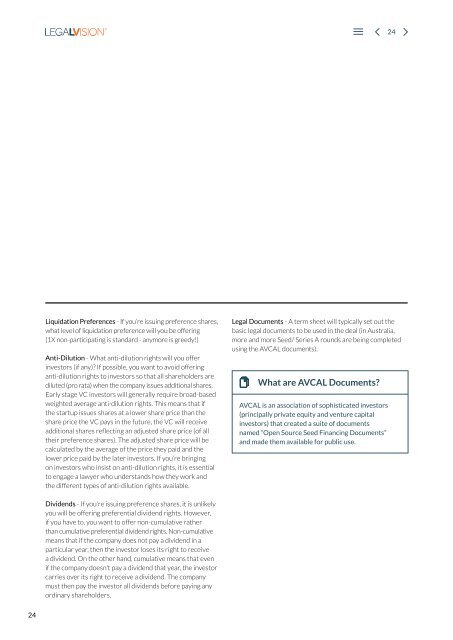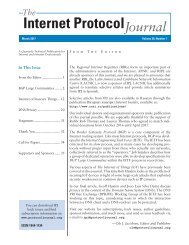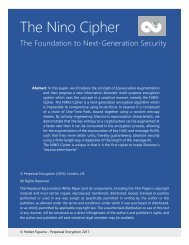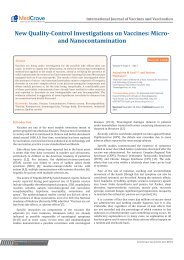You also want an ePaper? Increase the reach of your titles
YUMPU automatically turns print PDFs into web optimized ePapers that Google loves.
24<br />
Liquidation Preferences - If you’re issuing preference shares,<br />
what level of liquidation preference will you be offering<br />
(1X non-participating is standard - anymore is greedy!)<br />
Anti-Dilution - What anti-dilution rights will you offer<br />
investors (if any)? If possible, you want to avoid offering<br />
anti-dilution rights to investors so that all shareholders are<br />
diluted (pro rata) when the company issues additional shares.<br />
Early stage VC investors will generally require broad-based<br />
weighted average anti-dilution rights. This means that if<br />
the startup issues shares at a lower share price than the<br />
share price the VC pays in the future, the VC will receive<br />
additional shares reflecting an adjusted share price (of all<br />
their preference shares). The adjusted share price will be<br />
calculated by the average of the price they paid and the<br />
lower price paid by the later investors. If you’re bringing<br />
on investors who insist on anti-dilution rights, it is essential<br />
to engage a lawyer who understands how they work and<br />
the different types of anti-dilution rights available.<br />
Legal Documents - A term sheet will typically set out the<br />
basic legal documents to be used in the deal (in Australia,<br />
more and more Seed/ Series A rounds are being completed<br />
using the AVCAL documents).<br />
What are AVCAL Documents?<br />
AVCAL is an association of sophisticated investors<br />
(principally private equity and venture capital<br />
investors) that created a suite of documents<br />
named “Open Source Seed Financing Documents”<br />
and made them available for public use.<br />
Dividends - If you’re issuing preference shares, it is unlikely<br />
you will be offering preferential dividend rights. However,<br />
if you have to, you want to offer non-cumulative rather<br />
than cumulative preferential dividend rights. Non-cumulative<br />
means that if the company does not pay a dividend in a<br />
particular year, then the investor loses its right to receive<br />
a dividend. On the other hand, cumulative means that even<br />
if the company doesn't pay a dividend that year, the investor<br />
carries over its right to receive a dividend. The company<br />
must then pay the investor all dividends before paying any<br />
ordinary shareholders.<br />
24















